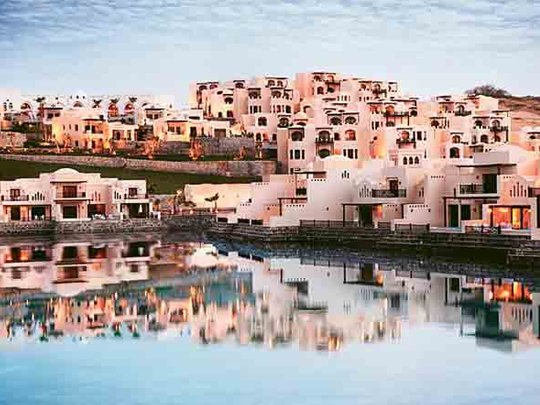
Ras Al Khaimah: Comparatively few hotels dot the Ras Al Khaimah map, which is likely to lead to not only high occupancy rates at these properties, but a drive to build more hotels over the coming years to increase tourist numbers.
Tourism is an important contributor to the emirate's GDP, said Dr Khateri Massaad, Chairman of the RAK Investment Authority.
"Last year we had about 400,000 tourists. This year we expect, more or less the same or a little more. Over the next couple of years the numbers should double as the number of rooms is going to double," he added.
RAK Tourism, now placed under RAK Economic Department as a promotional division, had announced high average occupancy figures for much of 2008 and 2009.
Hospitality
Visitor numbers to the emirate in 2008 amounted to 234,000, with a slight drop to 227,000 in 2009, and 633,000 guest nights, according to PKF The Consulting House.
Demand from business visitors, thanks to the growing free zones and meetings, incentives, conventions and exhibitions (MICE), are on the up, added Adrian Jonklaas, PKF Senior Consultant, advising the hospitality sector.
"RAK remains largely a leisure tourism market which complements the offer of Dubai by offering a cultural, eco and soft adventure [water, desert, mountain] experience to tourists. Europe remains the primary source market for RAK hotels though visitors from the GCC, Subcontinent and Asia are growing," he added.
To accommodate the demand, new resorts such as the Banyan Tree Al Wadi desert resort and The Cove Rotana, which is settled in the dunes along the coast opened since the end of last year and the beginning of this year. In addition, by end September, the luxury Palace Hotel in Al Hamra which has 348 suites, is expected to open its doors to host the Global Arab Business Meeting.
Those three hotels alone add almost another 1,000 hotel rooms, which means that room supply has grown by 70 per cent to 2,651 rooms. And the next two to three years will potentially see the doubling of the room supply to 5,000 rooms, with several hotels by Coral and RAK Properties, currently under development, due to open, according to PKF. "This large number of additional rooms will be a challenge to the hospitality industry but are equally vital if Ras Al Khaimah is to achieve its target of over two million guest nights by 2012," said Jonklaas.
The result is pressure on room occupancy and average daily rates for 2010 and 2011. "As the additional room supply comes on line their midterm prospects are more promising due to strong fundamentals underlying the hospitality and tourism industries in RAK," Jonklaas said.
The present Al Hamra Fort Hotel and Village is therefore looking to expand its reach and is looking at attracting tourists from Nigeria and the CIS countries, according to the Oxford Business Group.
Special events such as the RAK Marathon, also visitors spending the weekend from other emirates and chartered flights from Northern Europe fill up the hotels for much of the year, the peak season being from May to September.
Tourism development in the emirate will continue to bank on its history, dating back thousands of years to Ahmad Bin Majid, a local cartographer who assisted Vasco da Gama. The region is a treasure-trove of museums, forts and unspoilt coastline and mountain ranges.
Major RAK hotels
- Al Hamra Fort and Al Hamra Palace
- Khatt Springs Hotel (mountain)
- Hilton RAK, Hilton RAK Resort & Spa (Hilton & Double Tree planned in Mina Al Arab)
- The Cove Rotana
- Acacia (industrial zone)
- Banyan Tree Al Wadi












